GEMSTONE LORE
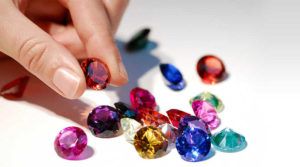
AMETHYST
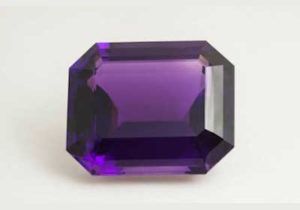
The vibrant purple variety of quartz is called Amethyst. It is the birthstone designation for February and the 6th wedding anniversary gift. Amethyst is abundant in Brazil, Uruguay, and Namibia. Other sources include Canada, Sri Lanka, Russia, US, and parts of Africa. The word amethyst comes from the Greek word amethyein, meaning “not drunk.” Ancient Greek mythology tell tall tales of amethyst and how this stone came to be. One such story is how Greeks wore amethyst to protect themselves from intoxication and dark magic. Other tales tell the story of Dionysus, the god of wine, and how he poured wine over crystal quartz, turning it into an amethyst. Because of these early stories, amethyst is believed to help people with addiction and to quit drinking. Placing an amethyst geode in the center of your room is believed to ward off negative energy and greatly reduce stress.
ALEXANDRITE
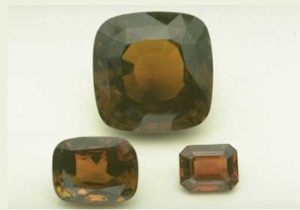
The most celebrated color-change gem is chrysoberyl’s alexandrite. It transitions from a bluish green in daylight to an orangey red in incandescent lighting. It is known as the traditional June birthstone. Alexandrites major sources are Brazil, Sri Lanka, and Russia. In fact, it is named after Russian Czar Alexander II where it was first discovered, in the Ural Mountains of Russia. The rare gem commands high prices for its unique phenomenon. Alexandrite’s color change characteristic represents adaptability and acceptance.
AQUAMARINE
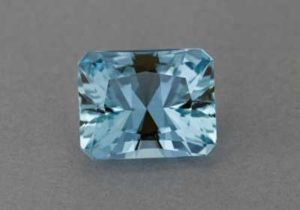 Aquamarine is the light greenish blue variety of the mineral species beryl. It is the accepted modern-day birthstone for March. Aquamarine is sourced from multiple parts of the world, but gem quality material is found mostly in Brazil, in the mining region of Minas Gerais. Other sources include Pakistan, Russia, India, and Nigeria. In the 19th century, the sea green variety was the most sought-after color commanding the highest prices. In fact, early sailors prized this sea-like gem and gifted it to Poseidon, the god of the sea. Ancient stories tell the tale of sailors wearing aquamarine as protection against the harsh sea. Today, the preferred color is a sky blue with subtle hints of green. Because of its serene-like quality, aquamarine is a soothing gem known to promote peace and harmony. It is also believed to aid in the swelling of the neck and throat. That is why most opt for a necklace or pendant to relieve any throat or thyroid soreness and problems with speech.
Aquamarine is the light greenish blue variety of the mineral species beryl. It is the accepted modern-day birthstone for March. Aquamarine is sourced from multiple parts of the world, but gem quality material is found mostly in Brazil, in the mining region of Minas Gerais. Other sources include Pakistan, Russia, India, and Nigeria. In the 19th century, the sea green variety was the most sought-after color commanding the highest prices. In fact, early sailors prized this sea-like gem and gifted it to Poseidon, the god of the sea. Ancient stories tell the tale of sailors wearing aquamarine as protection against the harsh sea. Today, the preferred color is a sky blue with subtle hints of green. Because of its serene-like quality, aquamarine is a soothing gem known to promote peace and harmony. It is also believed to aid in the swelling of the neck and throat. That is why most opt for a necklace or pendant to relieve any throat or thyroid soreness and problems with speech.
CITRINE
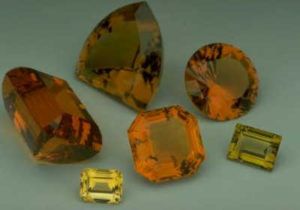 Citrine is the yellow to golden variety of the quartz mineral group. Its name comes from the Latin word citrus, meaning “lemon.” It is the birthstone option for November and a 13th wedding anniversary gift. Citrine is mostly found in Brazil, Madagascar, Russia, US, Spain, and France, to name a few. Legend has it that citrine promotes concentration and higher intelligence. In fact, some Chinese students bring citrine to school every day to help with their schoolwork and exams. In the Middle Ages, soldiers wore this gem on their chests believing it would protect them during battle.
Citrine is the yellow to golden variety of the quartz mineral group. Its name comes from the Latin word citrus, meaning “lemon.” It is the birthstone option for November and a 13th wedding anniversary gift. Citrine is mostly found in Brazil, Madagascar, Russia, US, Spain, and France, to name a few. Legend has it that citrine promotes concentration and higher intelligence. In fact, some Chinese students bring citrine to school every day to help with their schoolwork and exams. In the Middle Ages, soldiers wore this gem on their chests believing it would protect them during battle.
EMERALD
 The most sought-after beryl variety is the highly regarded emerald. This gem ranges from light to very dark green to a very strong bluish green. It is the May birthstone and gifted on both the 20th and 35th wedding anniversary. Rarely flawless, the best quality emeralds hail from Colombia. It can also be found in Africa, Russia, Afghanistan, Australia, and Brazil. Emeralds are one of the oldest gemstones found on Earth. Evidence of Egyptian mining go as far back as 4,000 years ago. Many legends and tales have circulated since. One common belief is that emerald is a great source of protection. It wards off evil and brings good fortune to its wearer. It is also a symbol of hope and balance.
The most sought-after beryl variety is the highly regarded emerald. This gem ranges from light to very dark green to a very strong bluish green. It is the May birthstone and gifted on both the 20th and 35th wedding anniversary. Rarely flawless, the best quality emeralds hail from Colombia. It can also be found in Africa, Russia, Afghanistan, Australia, and Brazil. Emeralds are one of the oldest gemstones found on Earth. Evidence of Egyptian mining go as far back as 4,000 years ago. Many legends and tales have circulated since. One common belief is that emerald is a great source of protection. It wards off evil and brings good fortune to its wearer. It is also a symbol of hope and balance.
MORGANITE
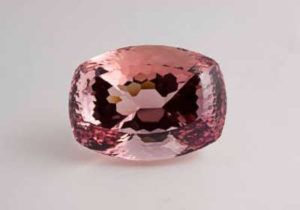 Beryl’s soft blush tone variety is called Morganite. It ranges from a light pinkish peach to a light purplish pink. It is often confused with kunzite, which displays a similar color. Some October babies opt for Morganite as the non-traditional birthstone. Named after financier and gem enthusiast, J. P. Morgan, this pastel pink gemstone was first mined in Southern California. Today it can be found in Brazil and Madagascar. Pink is associated with youth and femininity. It also inspires optimism and compassion to those who wear it.
Beryl’s soft blush tone variety is called Morganite. It ranges from a light pinkish peach to a light purplish pink. It is often confused with kunzite, which displays a similar color. Some October babies opt for Morganite as the non-traditional birthstone. Named after financier and gem enthusiast, J. P. Morgan, this pastel pink gemstone was first mined in Southern California. Today it can be found in Brazil and Madagascar. Pink is associated with youth and femininity. It also inspires optimism and compassion to those who wear it.
RUBY
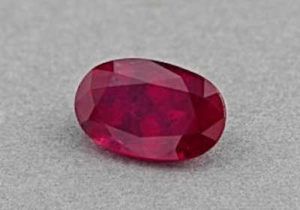 Red corundum is famously known as ruby. Rubies range from orangey red to purplish red to brownish red. All are acceptable colors to be called a ruby. It is the July birthstone and both the 15th and 40th wedding anniversary gift. Sri Lanka, Thailand, and Myanmar (Burma) are the major sources of ruby; Myanmar being the producer of the finest quality. Cultures from around the world praise this vivid red gem. The Greeks called it the mother of all gemstones. The Hindus called it the king of gems. The Chinese emperor desired a large ruby so much that he considered paying for it with a city! This bold colored gem promotes confidence and vitality to its wearer. It also represents passion and deep desire, perfect as a symbol of love.
Red corundum is famously known as ruby. Rubies range from orangey red to purplish red to brownish red. All are acceptable colors to be called a ruby. It is the July birthstone and both the 15th and 40th wedding anniversary gift. Sri Lanka, Thailand, and Myanmar (Burma) are the major sources of ruby; Myanmar being the producer of the finest quality. Cultures from around the world praise this vivid red gem. The Greeks called it the mother of all gemstones. The Hindus called it the king of gems. The Chinese emperor desired a large ruby so much that he considered paying for it with a city! This bold colored gem promotes confidence and vitality to its wearer. It also represents passion and deep desire, perfect as a symbol of love.
SAPPHIRE
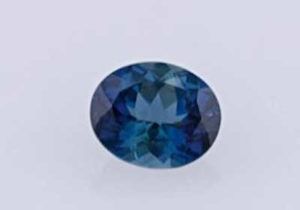 The blue variety of corundum is called sapphire. It ranges from a very light to very dark violet blue to greenish blue. It is the birthstone for September and given on the 5th and 45th wedding anniversary. Major sources include Myanmar, Sri Lanka and Thailand. Many believed Earth rested upon a sapphire and that is why our sky is blue. In modern times, Sapphire gained popularity after Prince Charles of Whales gave Lady Diana a sapphire engagement ring. After Princess Diana’s passing, Prince William gave it to Kate Middleton, his wife today. Sapphire is collectively recognized as the gem of truth, faith, and loyalty. It is also believed to help relieve headaches and vertigo.
The blue variety of corundum is called sapphire. It ranges from a very light to very dark violet blue to greenish blue. It is the birthstone for September and given on the 5th and 45th wedding anniversary. Major sources include Myanmar, Sri Lanka and Thailand. Many believed Earth rested upon a sapphire and that is why our sky is blue. In modern times, Sapphire gained popularity after Prince Charles of Whales gave Lady Diana a sapphire engagement ring. After Princess Diana’s passing, Prince William gave it to Kate Middleton, his wife today. Sapphire is collectively recognized as the gem of truth, faith, and loyalty. It is also believed to help relieve headaches and vertigo.
TANZANITE
 Ziosite’s most desired variety is a sapphire look-alike, named Tanzanite. It was first discovered in Tanzania back in the 1960s. Tanzanite displays a strong blue to violet to bluish purple hue. It is highly pleochroic, showing a variety of colors depending on the angle they are viewed from. Because it was only discovered about 50 years ago, this fancy gem does not have a long history. Likewise, it’s future remains uncertain because it is only found in one region of the world. One thing is for certain though, this rare beauty continues to command attention and desire. Given at the 24th wedding anniversary, this violet-colored gem is associated with intuition and integrity. It is also said to be the color of wisdom.
Ziosite’s most desired variety is a sapphire look-alike, named Tanzanite. It was first discovered in Tanzania back in the 1960s. Tanzanite displays a strong blue to violet to bluish purple hue. It is highly pleochroic, showing a variety of colors depending on the angle they are viewed from. Because it was only discovered about 50 years ago, this fancy gem does not have a long history. Likewise, it’s future remains uncertain because it is only found in one region of the world. One thing is for certain though, this rare beauty continues to command attention and desire. Given at the 24th wedding anniversary, this violet-colored gem is associated with intuition and integrity. It is also said to be the color of wisdom.